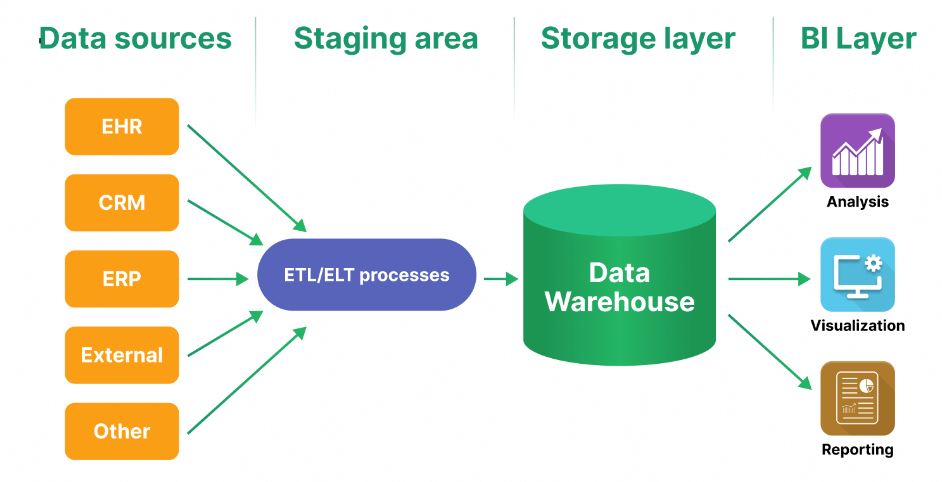Data Warehouses are always Requirement Drive. I am listing down some of the key components and considerations that you always have to keep in mind when architecting Data Warehouse:
1. Business Requirements:
- What are your business objectives for using a data warehouse?
- What questions do you need to answer with your data?
- Who are the primary users of the data warehouse?
2. Data Sources:
- What are the different sources of data you need to integrate (e.g., databases, applications, files)?
- What is the volume and frequency of data updates?
- What are the data formats and schemas?
3. Data Architecture:
- Logical Model: Defines the overall structure of the data, including dimensions, facts, and relationships.
- Physical Model: Specifies the implementation details of the data warehouse, including technology choices (e.g., cloud, on-premise).
4. Data Ingestion and Processing:
- How will data be extracted, transformed, and loaded (ETL) into the data warehouse?
- What tools and technologies will be used for data integration and processing?
5. Data Storage and Management:
- What type of database technology will be used to store the data (e.g., relational, columnar)?
- How will data be organized and partitioned for optimal performance?
- What are the considerations for data security, backup, and recovery?
6. Data Access and Reporting:
- What tools and technologies will be used to access and analyze data (e.g., BI tools, reporting dashboards)?
- What security measures are in place to control access to sensitive data?
7. Governance and Maintenance:
- How will the data warehouse be governed and maintained (e.g., data quality, lineage, documentation)?
- What processes are in place for monitoring performance and troubleshooting issues?
A very simplified Architecture will look like this:

Additional Considerations:
- Scalability: Can the architecture accommodate future growth in data volume and user demand?
- Cost: What are the budget constraints for building and maintaining the data warehouse?
- Cloud vs. On-premise: Which deployment model best suits your needs and resources?
Resources:
- Blueprint: Cloud Data Platform Architecture – Part 3: Analytics: https://panoply.io/data-warehouse-guide/data-warehouse-architecture-traditional-vs-cloud/
- Enterprise Data Architecture Blueprint: https://medium.com/tag/data-architecture
- Data Warehouse Architecture a Blueprint for Success: https://www.tutorialspoint.com/dwh/dwh_architecture.htm
Remember, this is just a starting point. It’s essential to tailor the architecture to your specific requirements and consult with data professionals to design and implement a successful data warehouse solution.

